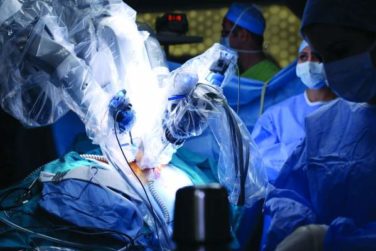AT THE ANNUAL MEETING OF THE AMERICAN EPILEPSY SOCIETY
SEATTLE (FRONTLINE MEDICAL NEWS) – When history, physical, and brain MRI fail to find a cause for infantile spasms, genetic studies – not specialized metabolic testing – should be the next diagnostic step, according to investigators from the National Infantile Spasms Consortium.
In a prospective study of 251 children with West syndrome at 21 pediatric epilepsy centers in the United States, they found that genetic studies – especially epilepsy gene panels and array comparative genomic hybridization (aCGH) – were more likely than specialized metabolic tests were to reveal the cause of infantile spasms. They were also a bit less expensive, and sometimes caught genes associated with mitochondrial disorders, glucose transporter deficiencies, and other metabolic issues.
“If your MRI looks normal, you are better off spending your money on genetic studies. Think about doing [an aCGH] microarray and an epilepsy gene panel if the microarray is negative.” If answers are still elusive, metabolic screening is in order, but “you can probably limit it to serum lactate, pyruvate amino acids, and urine organic acids,” said study leader Dr. Elaine Wirrell , director of the pediatric epilepsy fellowship program at the Mayo Clinic in Rochester, Minn.History, physical, and MRI found congenital or acquired structural brain abnormalities or other obvious causes for spasms in 138 children (55%). Three months of follow-up testing identified the cause in another 23 (9%). The kids in the study were an average of 7 months old at presentation and were about evenly split between boys and girls.
Almost all the children in the study had extensive metabolic evaluations of their blood and urine, and about half had cerebrospinal fluid testing. Even so, the diagnostic yield of metabolic workups was “very low” among children with no clear etiology for their spasms after their initial evaluations. “Very rarely did metabolic testing come up with any sort of etiological answer,” Dr. Wirrell said, and in the few times it did, abnormalities were found only on serum lactate, pyruvate amino acids, and urine organic acid testing.
About half of the kids had genetic testing. In the group with no clear etiology, 20 had an epilepsy gene panel; its diagnostic yield was 30%. If the variants of uncertain significance (VUS) were included, the yield rose to more than 50%. Among the 60-plus children screened with aCGH microarray, the diagnostic yield was 10%, but with the VUS, it was 20%. Chromosome 15 abnormalities were found in a number of children.
“We had a significant yield of clear pathogenic changes and variants” with genetic testing. With more widespread use, “I think we would pick up a lot more children who have genetic causes” for infantile spasms, Dr. Wirrell said.
There’s not a lot that can be done for those children at present. “For most cases that have a genetic etiology, we are not at the point where we can say ‘this etiology equals that treatment,’ but I think we’ll get there,” she said.
The study was funded by the American Epilepsy Society and the Pediatric Epilepsy Research Foundation. Dr. Wirrell said she has no industry disclosures.




